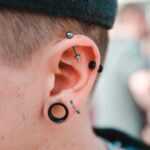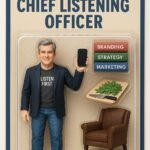Nick Woodman, the founder of Go Pro, didn’t want to make a billion dollars. He wanted to watch himself fly through the surf with a camera strapped to his surfboard. His passion was to be able to share his experience but from a new and exciting angle. He was the chief experience officer of his one-person company. Nick wasn’t developing a product. He was marketing a shareable experience.
Sony, on the other hand, saw Woodman’s success and decided, they could just make a better camera and capture market share. They would add more features including a better quality lens and many more settings. But what was missing was a true understanding of what the customer wanted. Sony was concerned about making a great waterproof camera, but Nick had been focusing on how surfers could take cool photos while surfing.
Sony sold metal, software and buttons. Go Pro (Nick) sold experiences you could share.
The difference isn’t small but a powerful lesson for anyone interested in marketing products or services.
The product matters but when you are constantly innovating with new clips and connections to put your product into new places, the focus is on the user. I like to think of this like “dating your customer” where you never stop getting to know them. You want to please them and find ways to be part of their life.
What Are You Selling?
- There is a difference between making cameras and selling experiences. They require a different mindset, skill, and brand direction. Is it time to reevaluate what you are selling?
- A focus on features can lead you down the path of making things complicated. Simple wins almost all the time. If your customer needs a screwdriver, don’t give them a swiss army knife.
- When you market the experience or lifestyle behind a product, your work on social media shifts. Wine marketers who tell me details about harvesting don’t realize that I am more interested in seeing cool recipes that I can make to go with your wine. Brands need to see how consumers use products and services so that the customer experiences come first.
- Little acts of compassion and empathy can be powerful. If you buy boxed strawberries at Whole Foods, they put a rubber band around them, so they don’t spill out in your bag. Kroger, Harris Teeter, Safeway, Food Lion and other traditional grocers don’t show their empathy for their customers. (Part of the value that Bezos (Amazon) saw is the Whole Foods culture of caring)
Stop and think about your product.
Are you often talking about the features you offer, not the benefit you provide? Maybe it is time to strap on a Go Pro onto your brand and see a fresh perspective.
Maybe you need a new lens to see your business from a different angle? Think of me like your Go Pro that can help you see something fresh and perhaps a bit counterintuitive. Call me at 919 720 0995 or email me at jeffslater@themarketingsage.com
Photo by Mike Levad on Unsplash




